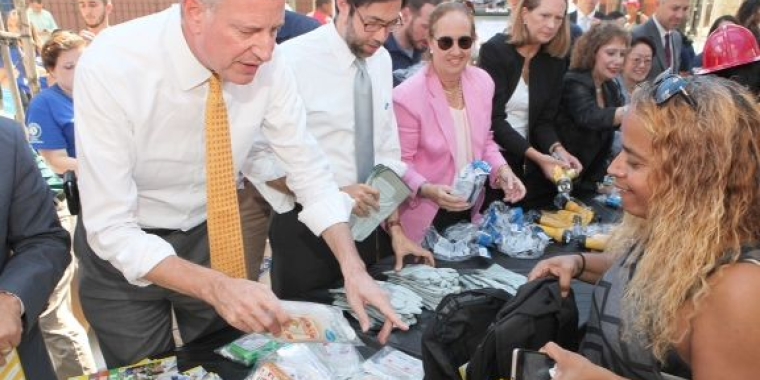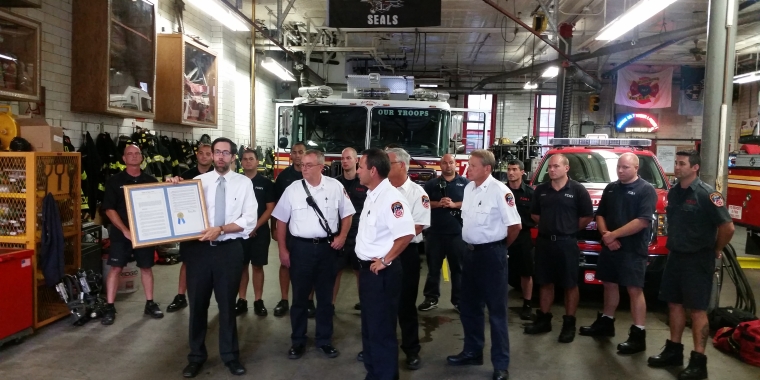
Testimony Regarding The City's Phase 2 Application For U.S. Department Of Housing And Urban Development National Disaster Resilience Competition
October 5, 2015
-
ISSUE:
- Resiliency
- Storms
- Manhattan
- Sandy

My name is Daniel Squadron and I represent the 26th District in the New York State Senate. My district includes the Manhattan neighborhoods of TriBeCa, Battery Park City, the Lower East Side, Chinatown, the Financial District, Greenwich Village, Little Italy, SoHo and the East Village and the Brooklyn neighborhoods of Greenpoint, Williamsburg, Vinegar Hill, DUMBO, Fulton Ferry, Brooklyn Heights, Cobble Hill, and Carroll Gardens.
Thank you for the opportunity to provide testimony on the second phase of New York City’s Natural Disaster Resilience Competition Application.
As I have said before, like other parts of the city, my Senate district was severely impacted by Hurricane Sandy in the fall of 2012. Thousands of my constituents lost essential services like heat, water, and electricity, and other basic services like transportation and telecommunication. My office, like other elected offices and neighborhood organizations around the city, engaged in a variety of outreach efforts to help residents and businesses both prepare for the storm and then to recover from the damage and disruption it caused. From this experience, it was evident that better long-term and short-term planning and mitigation were needed to protect against the impacts of future disasters.
I applaud the city and Mayor de Blasio for putting forth this application. There can be no question that the goal of our resiliency initiatives must be to develop and deploy a long-term plan which runs continuously from the northern end of Battery Park City down and around the southernmost tip of Manhattan and up the east side to Montgomery Street, linking to resiliency efforts already occurring north of Montgomery Street.
There remains significant unfunded need for long-term resiliency measures throughout these areas. On August 27, Mayor de Blasio announced the city would commit $100 million in capital funding for coastal resiliency in this part of Lower Manhattan. In addition, my colleagues and I worked with the city and state to secure a commitment of $14.75 million in March 2015 for the purpose of conducting an environmental impact study and installing deployable flood walls.
However one area excluded from the city’s current application is Battery Park City (BPC). While it is true that BPC has some built-in storm-resistant mechanisms, this area remains vulnerable. The city’s decision to include BPC in the Environmental Impact Study announced earlier this year underscores the reality that BPC has significant resiliency needs.
Another area excluded from this application is TriBeCa. When Hurricane Sandy made landfall in 2012, portions of TriBeCa were inundated by the storm. Floodwaters breached bulkheads throughout Lower Manhattan and traveled inland. One local organization reported up to 20 feet of flooding in its basement. According to a report produced by the NYC Special Initiative for Rebuilding and Resiliency, Hurricane Sandy's storm surge flooded Manhattan's West Side Highway with between two and four feet of water. As we work to achieve long term flooding protection throughout southern Manhattan, we must also work to ensure that TriBeCa is fortified as well.
It is clear that failure to protect Battery Park City and TriBeCa from the realities of extreme weather events will continue to leave far too much of Lower Manhattan vulnerable to further flooding and further disaster.
It is critical that the City’s plan to improve resiliency in Lower Manhattan be geographically comprehensive. Lower Manhattan encompasses diverse neighborhoods with various needs, but they collectively faced the challenges posed by Hurricane Sandy. While it is worth recognizing the City’s efforts to undertake specific resiliency projects, such as at NYCHA and other subsidized housing developments throughout Lower Manhattan, it is also important that resiliency plans be geographically continuous to protect from future flooding.
In the past 20 years, more than 8,000 new residential units have been built below Chambers Street. Today, one out of five Manhattan residents lives south of 14th street. In addition to its importance residentially, Lower Manhattan is the nation’s fourth largest business district, and every year more than 12 million tourists visit Lower Manhattan’s historic and cultural sites. More than 127 million people use public transportation to travel to Lower Manhattan annually.
Securing this neighborhood with geographically continuous protection from catastrophic weather events is critical for all who live, work and visit in Lower Manhattan.
A comprehensive resiliency plan that fails to factor in all of the unmet needs in Lower Manhattan from south of Montgomery Street through TriBeCa leaves a growing number of residents, businesses, landmarks, and transportation infrastructure open to another devastating storm. We must not let that happen.
Thank you for the opportunity to submit comments.
Share this Article or Press Release
Newsroom
Go to NewsroomSquadron, Rozic, and Chin Urge Improved Multilingual Access
September 4, 2015
SENATOR SQUADRON, FDNY OFFICIALS HONOR FDNY 150th ANNIVERSARY
August 27, 2015
